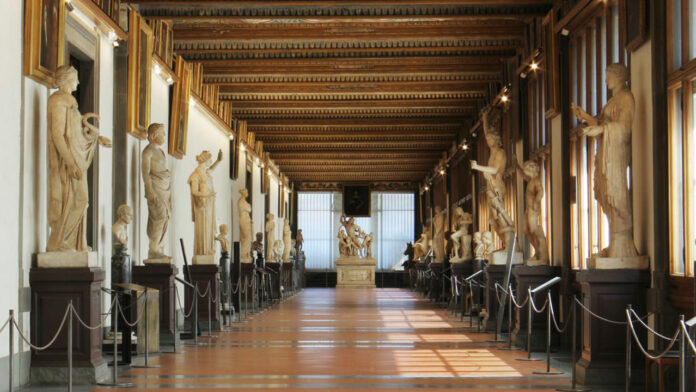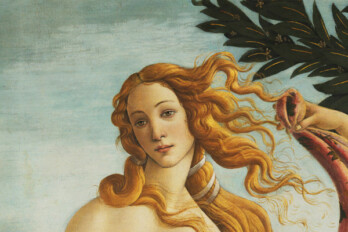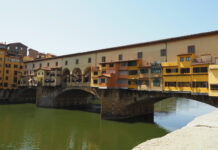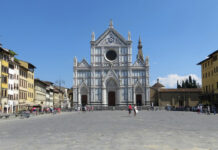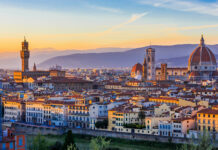One of the most famous museums in the world on account of its extraordinary collections of ancient sculptures and paintings (from the Middle Ages to the modern age). The Gallery occupies the first and second floors of the large building erected between 1560 and 1580 based on a project by Giorgio Vasari.
The Gallery is part of the museum complex that includes the Vasari Corridor (currently under renovation and scheduled to open in 2022) and the collections of Palazzo Pitti and the Boboli Gardens. The building with its characteristic “U” shaped loggia, located between Piazza della Signoria, Palazzo Vecchio and the Arno river, was designed by Giorgio Vasari in the mid-16th century and commissioned by Cosimo I to make it a government seat of the Medici family. The central nucleus of the collection was made up of works that belonged to the Medici and was later enriched by bequests and donations, including a large number of religious works derived from the suppression of religious orders at the end of the 19th century,
The collections of paintings from the 14th century and the Renaissance contain a number of absolute masterpieces of the art of all time: from Giotto to Simone Martini, Piero della Francesca, Beato Angelico, Filippo Lippi, Botticelli, Mantegna, Correggio, Leonardo, Raphael, Michelangelo, Caravaggio and Canaletto. There are also important collections by German, Dutch and Flemish painters, including Dürer, Rembrandt and Rubens. The Museum also houses the Classical Antiquities Collection and the famous Department of Prints and Drawings among the largest collections in the world, which includes about 150,000 works dating from the end of the 14th century to the 20th century, among which stand out examples of all the greatest Tuscan masters, from Leonardo to Michelangelo.
Among the most famous masterpieces the Madonna Rucellai by Duccio da Boninsegna, the Adoration of the Magi by Gentile da Fabriano, the Battle of San Romano by Paolo Uccello, the Spring and the Birth of Venus by Sandro Botticelli, Titian’s Venus of Urbino, Michelangelo’s Tondo Doni, Leonardo’s Annunciation (and his unfinished work The Adoration of the Magi), Piero della Francesca’s Double portrait of the Dukes of Urbino, Caravaggio’s Bacchus and Medusa’s Head.
A place of wonders inside the Uffizi that few people know about is the “Tribuna”, an octagonal room that well represents the original nucleus of the whole gallery where the most precious and ancient objects of the Medici collections were placed: it became very popular at the time of the “Grand Tour” and is said to have been an inspiration for the “Wunderkammer” of the European nobility.






